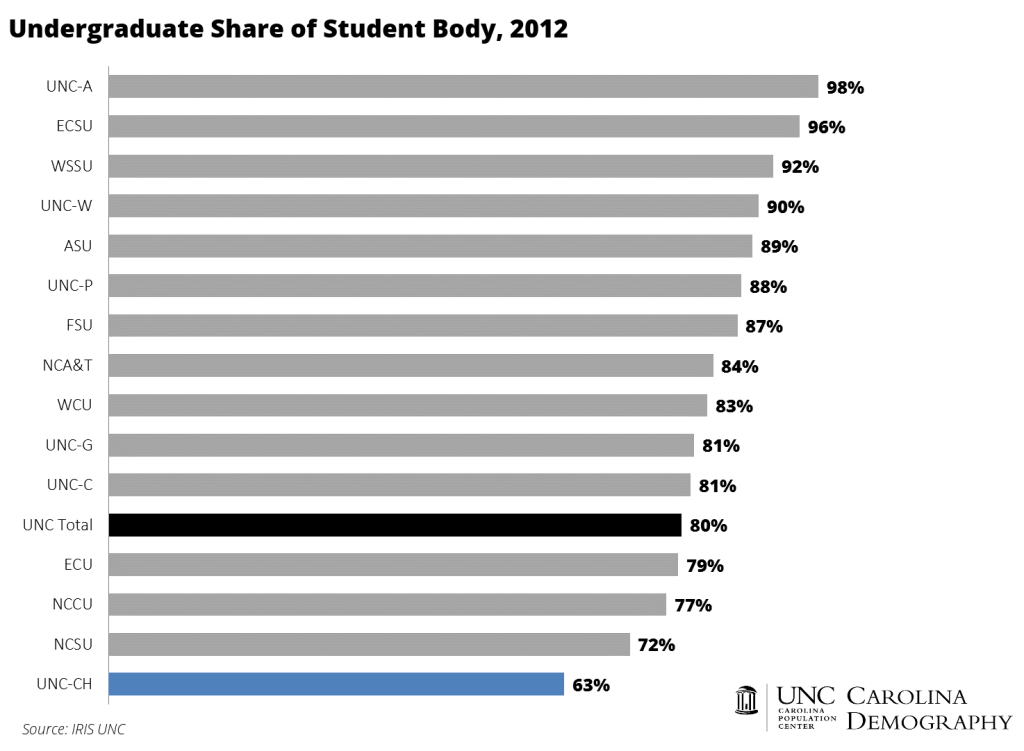Did you know…? 3 Fun Facts about UNC Schools
In 2012, more than 220,000 individuals were enrolled at one of the 15 universities within the University of North Carolina system. Enrollment ranged from just under 2,900 students at Elizabeth City State to more than 34,000 at North Carolina State. In the past few months, I’ve looked at where students come from (here, here, and here), as well as the impact that a large university can have on the county’s population structure. Today, I’ll highlight a few things I found interesting while perusing the Institutional Research Information System’s 2012 Fall Enrollment Report.
Across the UNC system, 80% of all students were enrolled in an undergraduate program in 2012. At some campuses, nearly all students were undergraduates: 98% of UNC-Asheville and 96% of Elizabeth City State students were undergraduates. In contrast, undergraduates comprised less than two-thirds (63%) of UNC-Chapel Hill students in 2012.
 NC State draws the largest proportion of graduate students from out-of-state.
NC State draws the largest proportion of graduate students from out-of-state.
UNC-Chapel Hill has the largest proportion of undergraduate students from out-of-state (19.6%), just barely edging out NC A&T (19.4%) for the top spot. But NC State has the greatest proportion of out-of-state graduate students. System-wide, 26% of graduate students were from out-of-state. In 2012, nearly 3,700 of NC State’s 9,500 graduate students—39%—were from another state or country.
 1 in 4 Fayetteville State students is 35 or older.
1 in 4 Fayetteville State students is 35 or older.Characteristics of the student body are a reflection of both institutional characteristics/mission and the surrounding environment. Fayetteville State’s location in Cumberland County and proximity to Fort Bragg cause its student body to look much different than the average student in the UNC system—particularly the average student at a university like UNC-Chapel Hill or East Carolina.
Fayetteville State’s students are more likely to be older students. In 2012, 25% of FSU students were 35 or older, more than twice the proportion system-wide (10%). In contrast, only 5% of Appalachian State students were 35 or older in 2012.
Similarly, FSU students are more likely to attend school part-time. Thirty percent of Fayetteville State students were part-time in 2012 compared to 20% system-wide. This may reflect higher proportions of individuals who are working full-time while attending school or balancing family obligations with school.
Source: All data used here were obtained from the 2012 Annual Update to the University of North Carolina’s Institutional Research Information System Fall Enrollment Reports.
Your support is critical to our mission of measuring, understanding, and predicting population change and its impact. Donate to Carolina Demography today.